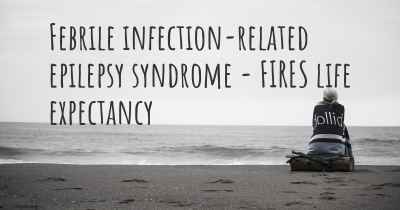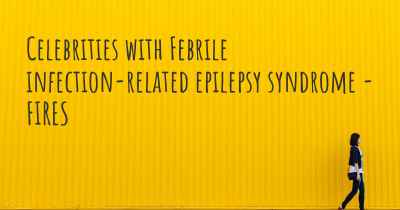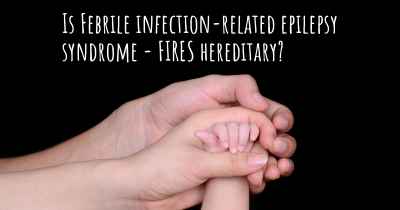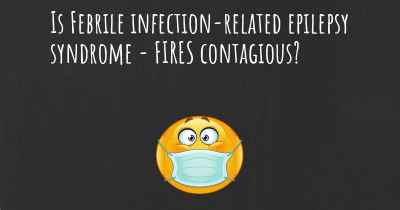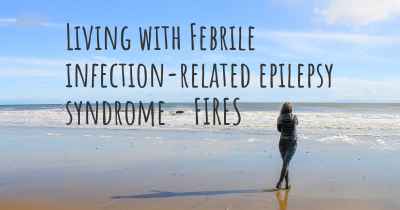What is the history of Febrile infection-related epilepsy syndrome - FIRES?
When was Febrile infection-related epilepsy syndrome - FIRES discovered? What is the story of this discovery? Was it coincidence or not?
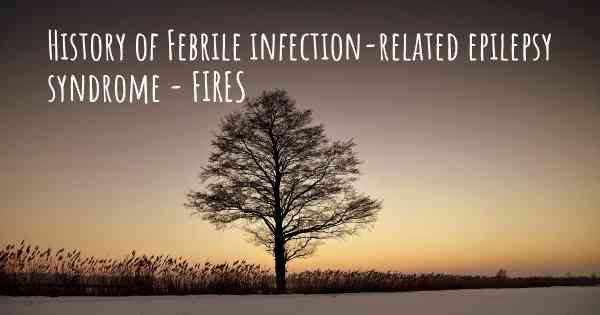
Febrile infection-related epilepsy syndrome (FIRES) is a rare and severe form of epilepsy that primarily affects children and young adults. It is characterized by the sudden onset of prolonged seizures following a febrile illness, such as an infection. FIRES is a devastating condition that can lead to significant neurological impairment and cognitive decline.
The history of FIRES dates back to the late 20th century when it was first recognized as a distinct clinical entity. The term "FIRES" was coined by French epileptologists in the early 2000s to describe a specific syndrome characterized by the rapid onset of refractory seizures following a febrile illness.
The exact cause of FIRES remains unknown, but it is believed to involve a combination of genetic and environmental factors. Some studies suggest a possible genetic predisposition to the syndrome, as certain genetic mutations have been identified in some individuals with FIRES. However, the majority of cases occur in individuals without any known genetic abnormalities.
The onset of FIRES is typically abrupt, with previously healthy children experiencing a febrile illness, such as a respiratory or gastrointestinal infection. Within a few days, they develop prolonged seizures that are often resistant to treatment with antiepileptic drugs. These seizures can be of various types, including focal seizures, generalized tonic-clonic seizures, or a combination of both.
The course of FIRES is highly unpredictable. After the initial onset of seizures, affected individuals may enter a state of continuous seizure activity known as status epilepticus. This state can last for weeks or even months, requiring intensive care and aggressive treatment. Despite aggressive treatment, many individuals continue to experience recurrent seizures and may develop other complications, such as respiratory distress, autonomic dysfunction, and encephalopathy.
The long-term outcomes of FIRES are often poor. The prolonged and refractory nature of the seizures can lead to significant neurological damage and cognitive decline. Many individuals with FIRES experience persistent epilepsy, intellectual disability, and behavioral problems. The mortality rate associated with FIRES is estimated to be around 5-10%, primarily due to complications related to status epilepticus or associated medical conditions.
Diagnosing FIRES can be challenging as it is a diagnosis of exclusion. Other potential causes of acute-onset refractory seizures, such as autoimmune encephalitis or metabolic disorders, must be ruled out through various diagnostic tests, including blood tests, brain imaging, and electroencephalography (EEG).
Treatment for FIRES is primarily supportive and aimed at controlling seizures. Initially, individuals are treated with high-dose intravenous antiepileptic drugs, such as benzodiazepines and barbiturates, to halt the ongoing seizure activity. If seizures persist, other treatment options may be considered, including ketogenic diet, immunotherapy, or experimental therapies. However, the effectiveness of these treatments in FIRES is limited, and many individuals continue to experience seizures despite aggressive management.
Research into FIRES is ongoing to better understand its underlying causes and develop more effective treatments. The rarity of the condition makes it challenging to conduct large-scale studies, but collaborative efforts among researchers and clinicians worldwide are helping to advance our knowledge of FIRES.
In conclusion, FIRES is a rare and devastating form of epilepsy that primarily affects children and young adults. Its sudden onset following a febrile illness, prolonged and refractory seizures, and poor long-term outcomes make it a challenging condition to manage. Ongoing research aims to unravel the mysteries of FIRES and improve the lives of those affected by this debilitating syndrome.
Posted Jun 21, 2022 by Carla 4020
